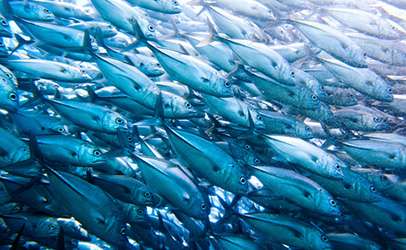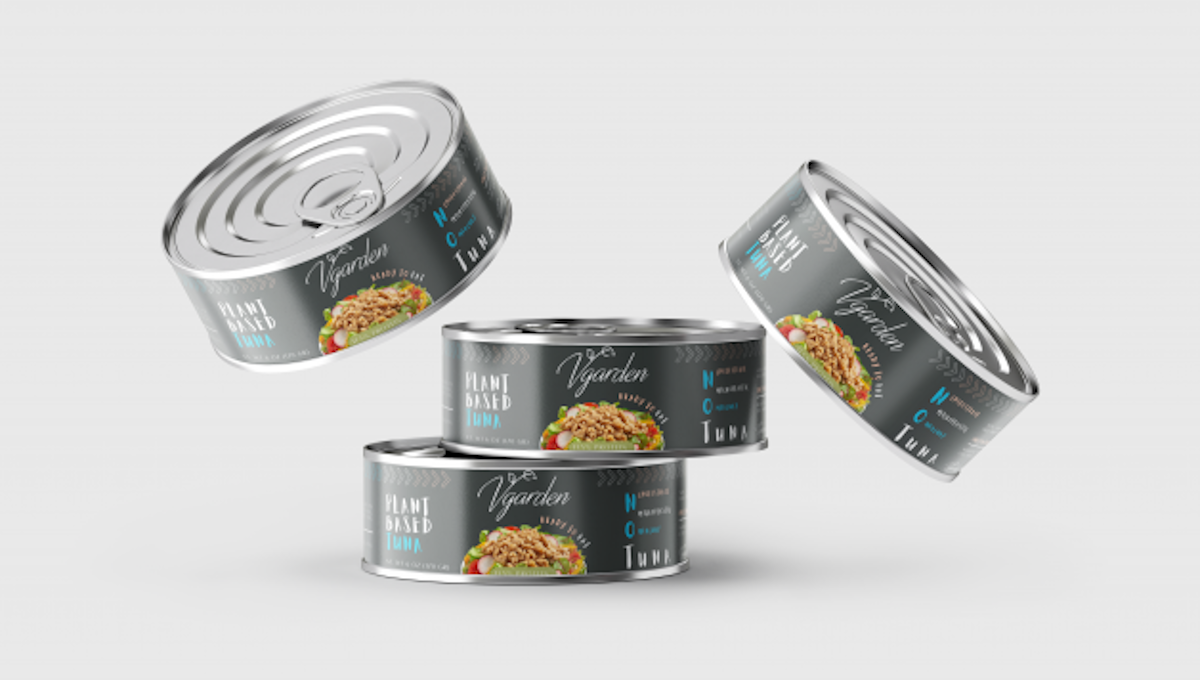Fish-free tuna in a can. How can that be?
Turns out that an Israeli company, Vgarden Ltd. has developed what it calls a “game-changing’ vegan tinned tuna.”
“Game-changing” in more ways than one because tuna is the most popular fish in the world. Open up a food cupboard in just about any household, and you’ll likely find a can, or more, of tuna on one of its shelves. And look at a family’s list of meals, and you’ll likely see favorites such as tuna casserole and tuna sandwiches.
But with tuna so plentiful on the grocery shelves, why the push to produce fish-free tuna, especially since it’s such an affordable and convenient source of protein not only in the United States but also in Europe and Asia, not to mention growing markets in South America and the Middle East.

For the Israeli company, the problem is that overfishing of this high-in-demand fish has had a devastating effect on their numbers to the point that it has put several species, such as the yellowfin and the Atlantic Bluefin, on the edge of extinction, said Tom Rothman, head of global sales of the Israeli plant-based start-up Vgarden.
“This not only poses problems in terms of food security,” he said, “but also negatively impacts the delicate and fragile balance of the marine environment.”
Hoping to “turn the tide” on this, the company has devoted 12 months of research and development to the challenge of creating a canned tuna that will help contribute to restoring the ocean’s wild tuna populations.
The goal of this venture is to create a product with the taste, texture, and smell of tinned tuna with plants.
“This was the greatest challenge,” said Omer Eliav, chief of research and development and Vgarden co-founder explained. “The biggest challenge in creating an identical tinned tuna is to provide the complete sensory experience of taste, texture, and smell. We want to make it enticing to all consumers, not just vegans.”
After a lot of trials and tastings, the start-up managed to achieve what the company says has the “exact look and feel” of tuna.
Ilan Adut, CE of Vgarden, said the company’s tinned tuna has a very distinct flaky, yet moist and chewy texture, with a powerful fresh-from-the sea aroma.
With a bow to the modern consumer who wants foods with “clean labels” Eliav said it was also important to clean up the label from any unwanted additives and make sure it contained just a short list of ingredients.
”Our new tuna-like product is clean-label, scalable, affordable, and sustainable,” he said. “But for our plant-based creation to serve as a true substitute, even beyond compellingly mimicking all of the sensory qualities, it also has to match tuna as much as possible in nutritional value.”
Vgarden’s tuna is based on pea protein, with a total protein content of 11.2 to14 percent before and after filtration. It contains a short list of natural ingredients including fibers and sunflower oil.
The company’s private-label tuna is already available in some retail and food-service sectors. It is available in two packaging formats: pouches for chilled storage and cans to give the full authentic tuna experience and to facilitate convenient non-chilled storage.
What about food safety?
Conventional tuna has some food-safety setbacks, the major one being mercury.
In recent research, Consumer Reports tested five brands of tuna to check mercury levels: Bumble Bee, Chicken of the Sea, Starkist, Safe Catch and Wild Planet in cans. Pouch containers have the same kind of tuna as cans, but pouches were not tested.
There was a wide range of mercury levels between types — light and albacore — and brands. Albacore had higher levels of mercury in all brands, not surprisingly because the fish are larger, according to Consumer Reports.
Albacore tuna is a larger fish with a lighter colored flesh, a firmer texture, and a milder flavor than the solid or chunk light fish varieties.
Generally speaking, the larger the fish of any kind, the more mercury it can contain.
The researchers found that regardless of brand or type, mercury levels can spike from can to can, therefore pregnant women are advised not to eat the fish. And children should not have any albacore at all.
A known neurotoxin, mercury can cause many problems with a developing fetus. It is also a health risk for children whose bodies and brains are still growing and harmful to adults, causing problems with fine motor coordination, speech, sleep, walking and prickly sensations.
Company spokesman Ben Dotan told Food Safety News that plant-based tuna does not contain any animal derived ingredients. And because it doesn’t contain fish parts, it doesn’t contain any mercury, heavy metals, microplastics derived from marine and fish farming contamination, or cholesterol.
“One of the major challenges in the development of this product was getting it to maintain its texture and taste after canning and sterilizing the product at high temperature,” Dotan said. “Our canned tuna goes through sterilization in very high temperatures for a long time and therefore does not spoil over long periods of time.”
According to Consumer Reports, if your child will only eat tuna and no other fish, safe amounts per week are listed below:
Age 1-3 — 2 ounces
Age 4-7 — 4 ounces
Age 8-10 — 6 ounces
Surprisingly, canned tuna actually has less mercury than fresh tuna primarily because smaller fish, which contain less mercury than larger fish, are used in the canning process.
Canned tuna is widely consumed in America and is often the only fish a person ever eats, according to Consumer Reports.
The well known benefits of fish, including tuna, make it a delicate balancing act to know how much is enough.
About one-third of Americans eat canned tuna two or more times per month and 10 percent eat it at least once a week, according to a Consumer Reports 2022 national survey of 2,185 adults.
Globally, tuna is the world’s most consumed fish, according to a United Nations report. The global tuna fish market is projected to grow from $41.06 billion in 2022 to $49.70 billion in 2029.
Even so, tuna’s popularity coincides with a major rise in ethically and ecologically motivated health-conscious consumers seeking plant-based seafood alternatives, say Vgarden officials.
Consumer Reports asked all companies and the National Fisheries Institute, a trade association representing canned tuna manufacturers, to comment on the research. The institute said the levels Consumer Reports found were well below the FDA limit and said the products are safe.
Where does the Mercury come from
Mercury occurs naturally at low levels in rock, soil and water throughout the world, according to an article in “FoodPrint”. But human activities have increased total mercury concentrations in the atmosphere by about 450 percent. This makes it a serious human-health issue.
The burning of fossil fuels like coal and gold mining are the most to blame for human-caused mercury emissions,
Once the mercury is in the air, it can travel for thousands of miles and will eventually make its way into the ocean or large bodies of water, either by being deposited there or on land and getting washed downstream.
When bacteria in the ocean process mercury, the highly toxic chemical methylmercury is created. This chemical builds up in seafood thus causing health problems for humans, especially the young.
(To sign up for a free subscription to Food Safety News, click here.)

